Parque Natural de Urkiola · Ayuntamiento de Abadiño
Situación
Menú principal
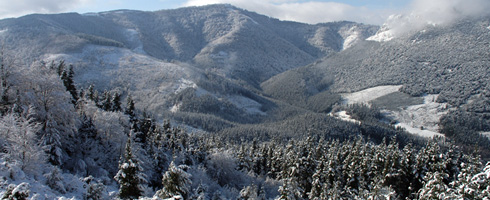
Over half the park’s surface area is made up of forest and it is therefore a very important habitat with respect to the number of species and populations. Even though there are some animals that are quite specific to a type of woodland, as is the case of the grey dormouse that lives nearly exclusively in decidious forests, the majority live in different trees, and even some have adapted to live in conifer repopulations and have even thrieved, as is the case of the Coal Tits.
The group of birds is well represented by a good number of forest passeriforms, which include the coal tit, the tit, the red-breasted nuthatch, the bullfinch, the pigeon and robin. Woodpeckers such as the green woodpecker and the great spotted woodpecker also find sufficient food and good places to nest, particularly in forests with mature trees. The nocturnal birds of prey include the tawny owl, which is very numerous in this type of forests and which easily adapts there. The diurnal birds of prey are also very well represented, and proof of this is the presence of the goshawk and the sparrow hawk, along with the common buzzard, the Honey buzzard and the black kite.
The mammal group is another of the Park’s natural values and the forest provide suitable conditions for large (wild boar, red deer, pine marten, civet cat, badger and fox) and small animals (squirrel, grey dormouse and field mouse) to survive.
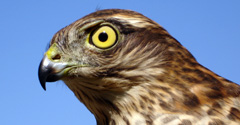
A small bird of prey with wide and rounded wings and long tail. The male is smaller than the female. Its back is grey and its has brown stripes underneath. It is very similar to the goshawk, but the latter is much larger. The sparrowhawk adapts very easily to reforested areas. It feeds off small birds that it hunts on the wing. Between 6 and 10 pairs usually nest in the Park.
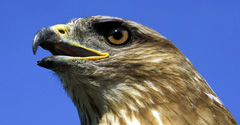
The common buzzard is the most common diurnal bird of prey in the Park. Despite its variable plumage, it is usually brown in colour, with lighter areas on its wings and a type of whitish bib on its chest. The wings and tail are wide and rounded. It is easy to spot this bird on flight or perching on a post. It mainly feeds on small vertebrate that it hunts on the wing. Between 20 and 25 pairs usually nest in the Park.
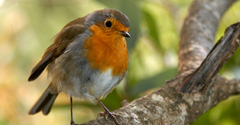
Small and well-known bird that is brown in colour and with a bright red chest. It can often be seen hopping about the ground in the forests. It is a very territorial bird that will see off any intruders and its song can be heard throughout the year. It fundamentally lives off insects, although small invertebrates and some fruits and seeds form part of its diet. It usually breeds in April.
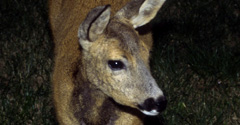
It is a very agile, medium-sized deer, that is much smaller than a red deer. The males weigh barely 25 kg. The male’s antlers are very bumpy and with few branches. It is brown in colour, although its winter coat is rather more grey and it has as pale patch on its back quarters. Some years ago, it had disappeared from the Park, but it is now clearly increasing in number. The greater number of deer is even resulting in damage in crops.
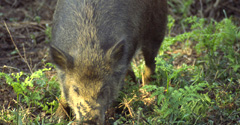
Very similar to the domestic pig, but with long, strong hair. It has a prominent head, with a strong nose that it uses to dig in the earth to look for roots. Its pigmentvaries from black to grey. The males are larger in size and can weigh up to 150 kg. It covers large areas in search for food and can travel for great distances. It is omnivore and its diet includes small vertebrates, roots, beech nuts and acorns. It lives in great numbers in the Park and causes a great deal of damage to grazing land when it digs up the soil.
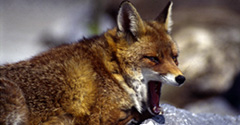
Carnivorous mammal with a long tail and a thick reddish brown, or grey, coat. It has long, pointed ears. It is a solitary and timid animal, but it will approach the farmstead in search of food at night. It covers long distances in search of food. Even though the fox is a carnivore, it will add large amounts of wild fruit to its diet in autumn. It is most probably the most common carnivorous mammal in the Park.
2006 - 2007 © Anteiglesia de Abadiño Town Council - All rights reserved